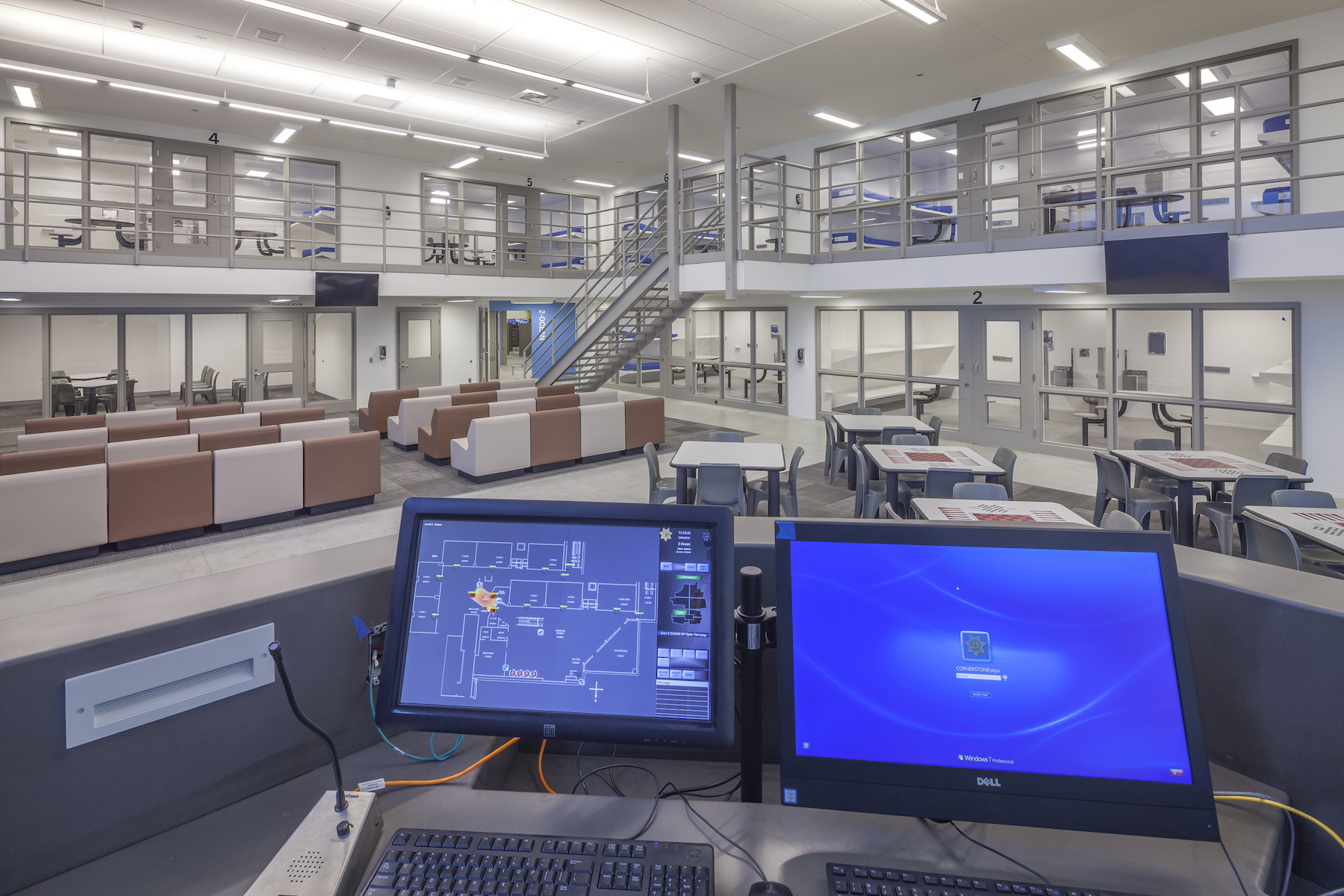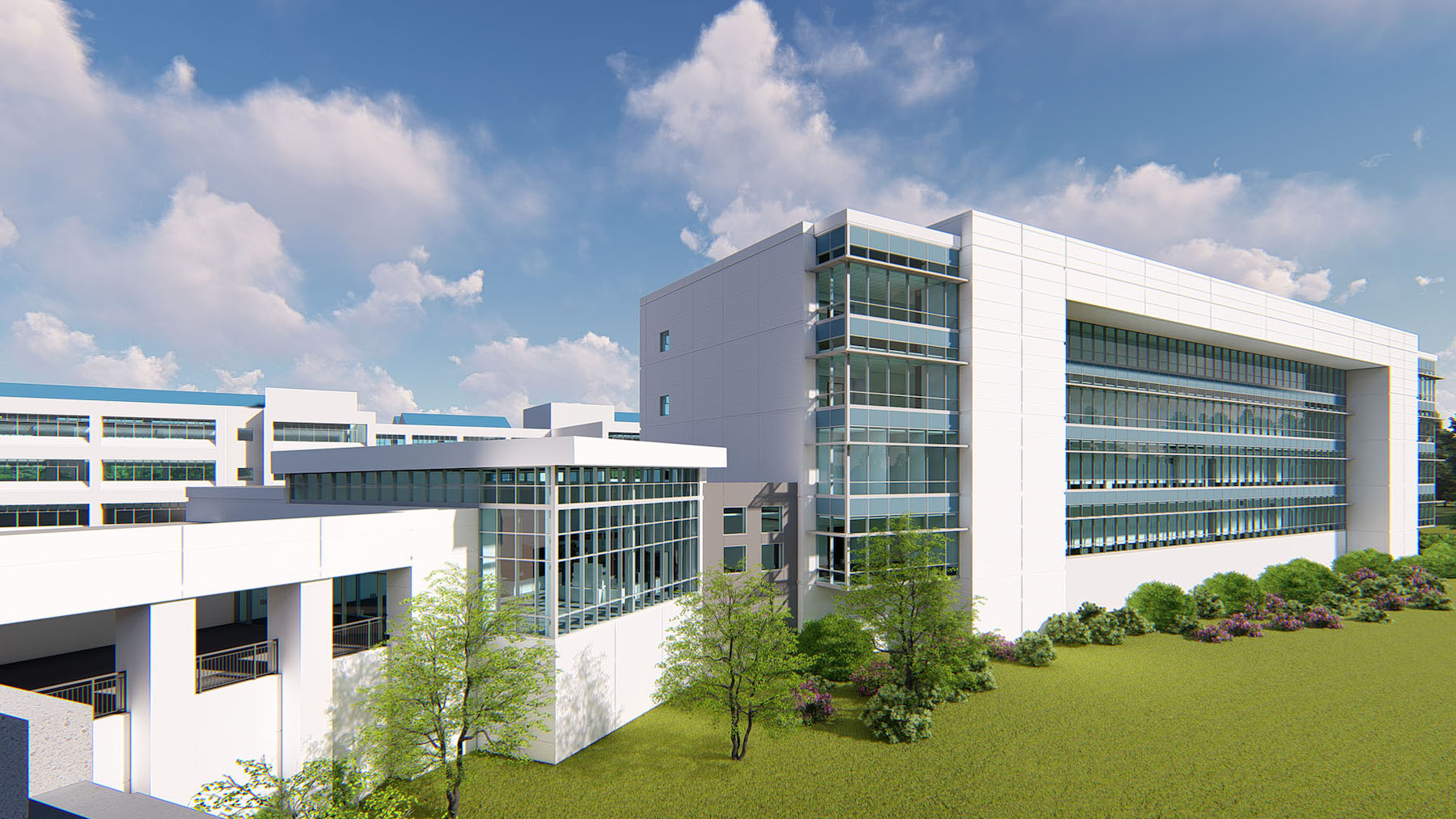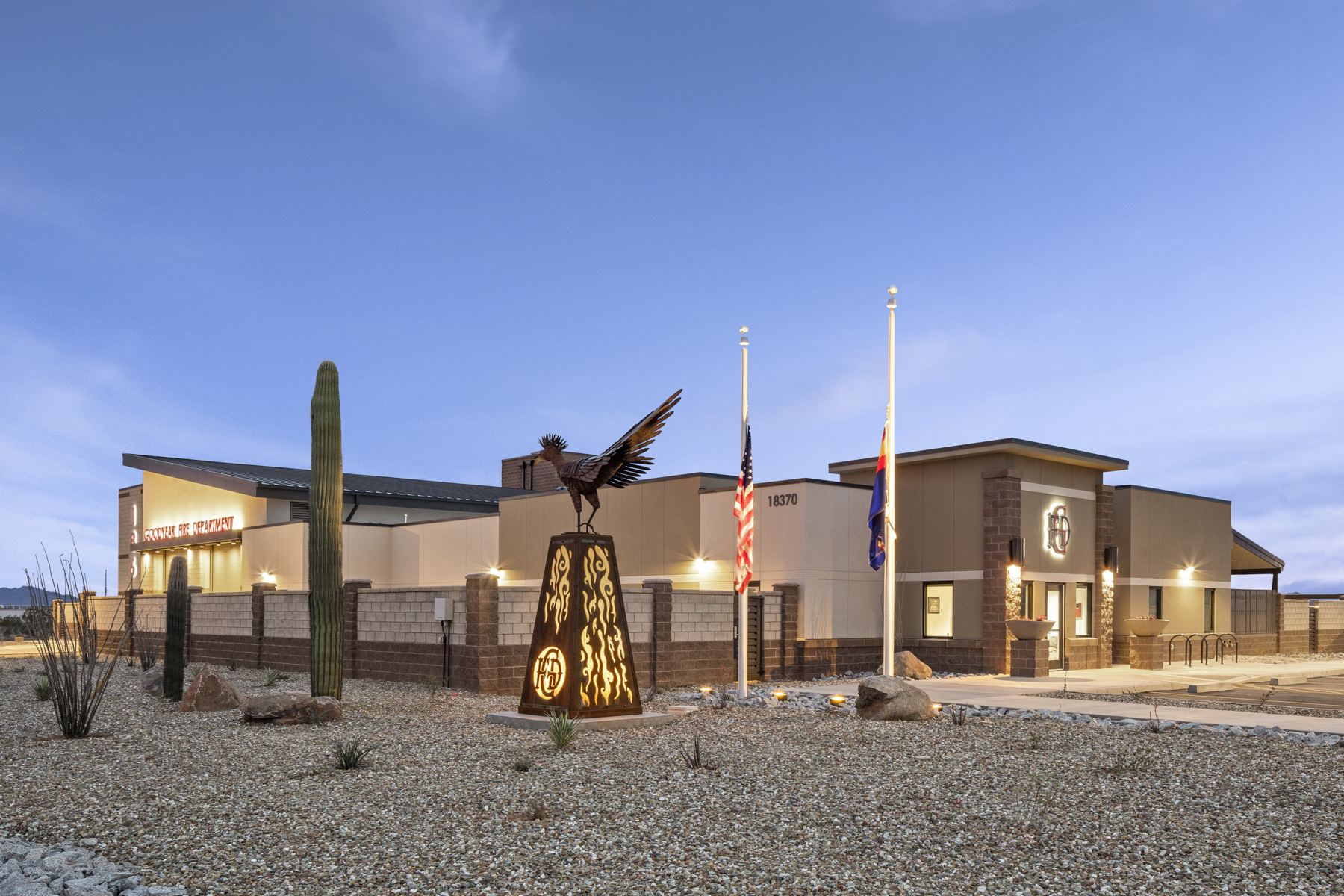Police stations are not generally thought of as welcoming places. So it might surprise some people to learn that new or renovated stations are being designed to project a more approachable veneer.
“Many clients have been treating their [station] projects as town centers, ensuring the exterior is community friendly and welcoming for the public,” says Tom Leonard, Senior Project Executive with Gilbane Building Company. Jay Smith, a Vice President with STO Building Group’s Ajax Building Company, notes that police departments are incorporating public areas “to be more inviting.” And Nichole Kotsur, CORE Construction’s National Vice President of Public Safety, says that police station design now leans toward floor plans “that are much more open, with less private spaces.”
There is a curative component to the design of buildings in the public safety/justice sector. David Whimpey, Construction Manager with STO’s Layton Construction, sees more attention paid to what he calls “therapeutic justice” and mental health via more natural light and color. “Creating normative environments for rehabilitation instead of penal and punitive environments has been a focus for the construction industry” in the justice and public safety arenas, observes Eric Stenman, President of Balfour Beatty U.S.
One of Balfour Beatty’s current projects is the construction of a $19 million, 50,000-sf Police Headquarters in Mooresville, N.C., that when it opens next year will replace the town’s existing facility. This two-story building, designed by Little Diversified Architectural Consulting, will house the Chief of Police and police department, and feature collaborative spaces, exercise rooms, training rooms, bulk evidence storage, prisoner and vehicle processing areas, canine storage area, an emergency operations center, and decompression areas for patrol staff.
Stenman says Balfour Beatty is receiving requests for a “good mix” of renovation and expansion of existing buildings, and for new construction of correctional and criminal justice facilities. This sector also presents “unique opportunities” to partner on multiple design-build and joint-venture projects.

At least half of the Public Safety/Justice projects being worked on by the AEC firms contacted for this article are new construction or additions. These include the HDA Architects-designed, 12,547-sf Fire Station No. 221 that CORE Construction is building in Mesa, Ariz., with four apparatus bays, eight dormitories, a kitchen and dining room, dayroom, job-task conditioning room, a crew office, and community room. New construction currently accounts for 71 percent of Manhattan Construction’s work in this sector, says John Reyhan, its President.
For courthouses, the architectural firm Page & Turnbull spots a trend toward template and modular design to bring “standardization and equity” to projects, as well as to offset rising labor and construction costs, says Peter Birkholz, AIA, LEED AP, an Architect and Principal with that firm. Smith of Ajax Building Company also sees modular design and delivery becoming more prevalent in this sector “as we move labor out of the field into a manufacturing setting.”
David Burton, Vice President with Layton Construction, adds that as correctional facilities re-evaluate their bed counts for future health care and mental health needs, “renovation will potentially be a big part of the market going forward.”
HEALTH AND SAFETY ARE PRIORITIES
One abiding concern in this sector, partly the result of the COVID-19 outbreak, has been the health and safety of buildings’ occupants. Moseley Architects’ jail clients are requesting enhanced medical areas and negative pressure holding cells, says Dan Mace, its Vice President. Utilization of remote video visitation is increasing as physical visit spaces within jailhouses shrank during the COVID-19 event.
Gilbane’s Leonard sees technology being installed to accommodate remote hearings, and jury spaces designed larger for social distancing. He adds that more courtrooms are being moved to lower levels in their buildings to minimize the need for elevator access.
“We have observed an increased use of technology, including safety and security systems, temperature scanning, and check-in procedures,” says Tim Kippenhan, Vice President and COO of Miron Construction. Other changes, he adds, include fewer doors, auto- or motion-sensor operated openings, and considerations with larger spaces planned for potentially fewer occupants.
Layton Construction’s Whimpey also notes a “big push” in the advancement and use of technology for video conferencing and visitation, telehealth and virtual medicine. These changes create efficiencies in daily operations while decreasing the demand on correctional officers for resources and time required to transfer inmates. Technology is also critical for cataloging and managing property and evidence. One of CORE Construction’s recently completed projects, the Architekton-designed 22,400-sf Police Property and Evidence expansion in Avondale, Ariz., is modernizing space to store over 65,000 items of evidence.

Manhattan Construction was part of a joint venture with Byrne and 3i that managed the construction to modernize the three-building Dallas County Records Building complex. This $150 million Gensler-designed project, which was completed in the summer of 2020 and unified the buildings into one functional facility, was one of the first WELL-certified government projects in Texas via strategies that included specifying low-VOC paints and finishes, offering healthier food options, letting in more natural light, providing access to a new on-site fitness center, installing ergonomic workstations, and integrating art and a connection to nature into the complex.
Plant City, Fla., engaged Manhattan Construction to transform several municipal and government buildings into touch-free, socially distanced spaces. Inside the town’s City Hall and the Police Department buildings, Manhattan has installed “Genius Walls,” demountable glass-hybrid partitions that stretch from the floor to a few inches below the ceiling. The walls, explains Reyhan, Manhattan Construction’s President, provide a clear view but limited exposure risks to essential personnel and their daily operations.
Manhattan replaced 465 existing touch-type plumbing fixtures with touchless motion-activated fixtures, and installed hands-free elbow door pulls, glass-wall separators, and pass-through transaction windows.
UNDER ONE ROOF
Unlike some building types, public safety and justice facilities have not jumped onto the multipurpose bandwagon. “Due to safety and funding related issues, we have not seen the court projects incorporate any non-justice related programs,” says Page & Turnbull’s Birkholz, echoing other AEC sources.
What is happening, though, is municipalities combining public safety and justice functions into one building. “Shared-use facilities are becoming more popular,” says CORE Construction’s Kotsur, who notes that recent projects have housed a police and fire department, a police department with city hall, and a police and fire department with a public library or public works office.
Gilbane’s Leonard says more clients are locating correctional facilities adjacent to courthouses, with a tunnel or bridge connection that, he says, supports security and decreases transportation costs. In these environments, clients want more cameras, card readers, and special software that enhance security and safety.+
Related Stories
| Aug 11, 2010
Financial Wizardry Builds a Community
At 69 square miles, Vineland is New Jersey's largest city, at least in geographic area, and it has a rich history. It was established in 1861 as a planned community (well before there were such things) by the utopian Charles Landis. It was in Vineland that Dr. Thomas Welch found a way to preserve grape juice without fermenting it, creating a wine substitute for church use (the town was dry).
| Aug 11, 2010
Special Recognition: Triple Bridge Gateway, Port Authority Bus Terminal New York, N.Y.
Judges saw the Triple Bridge Gateway in Midtown Manhattan as more art installation than building project, but they were impressed at how the illuminated ramps and bridges—14 years in the making—turned an ugly intersection into something beautiful. The three bridges span 9th Avenue at the juncture where vehicles emerge from the Lincoln Tunnel heading to the Port Authority of New Yor...
| Aug 11, 2010
Jefferson Would Be Proud
The Virginia State Capitol Building—originally designed by Thomas Jefferson and almost as old as the nation itself—has proudly served as the oldest continuously used Capitol in the U.S. But more than two centuries of wear and tear put the historical landmark at the head of the line for restoration.
| Aug 11, 2010
29 Great Solutions
1. Riverwalk Transforms Chicago's Second Waterfront Chicago has long enjoyed a beautiful waterfront along Lake Michigan, but the Windy City's second waterfront along the Chicago River was often ignored and mostly neglected. Thanks to a $22 million rehab by local architect Carol Ross Barney and her associate John Fried, a 1.
| Aug 11, 2010
Platinum Award: The Handmade Building
When Milwaukee's City Hall was completed in 1896, it was, at 394 feet in height, the third-tallest structure in the United States. Designed by Henry C. Koch, it was a statement of civic pride and a monument to Milwaukee's German heritage. It was placed on the National Register of Historic Places in 1973 and designated a National Historic Landmark in 2005.
| Aug 11, 2010
John Adams Courthouse
After more than a century without a substantial renovation, Old Suffolk County Courthouse, designed in Neo-Classical style by Boston's first city architect, George Clough, was overdue for a facelift. Enter the makeover team: Boston-based architects Childs, Bertman, Tseckares and general contractors Suffolk Construction/NER Construction Management.
| Aug 11, 2010
The pride of Pasadena
As a shining symbol of civic pride in Los Angeles County, Pasadena City Hall stood as the stately centerpiece of Pasadena's Civic Center since 1927. To the casual observer, the rectangular edifice, designed by San Francisco Classicists John Bakewell, Jr., and Arthur Brown, Jr., appeared to be aging gracefully.







